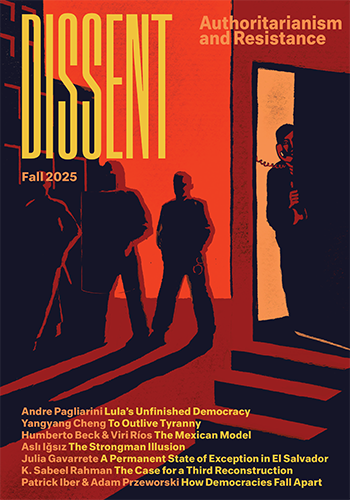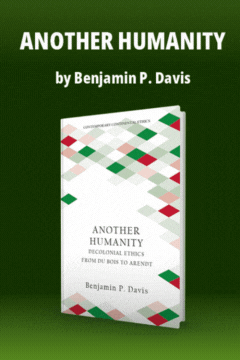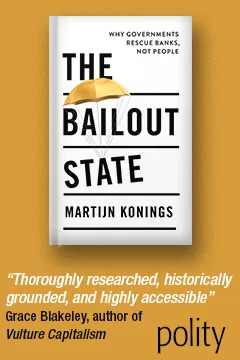Culture War in the Classroom
Culture War in the Classroom
It is time for educators to go on the offensive against the conservative campaign to ban “critical race theory” from schools.

The American right’s latest culture war offensive is an all-out assault on “critical race theory” (CRT). Like other right-wing campaigns, the attack on CRT is taking place on two fronts—one battle to define the term negatively in popular discourse, and another to enact laws and executive orders that severely restrict how racism is addressed in public schools and post-secondary public institutions. The two fronts work in tandem, feeding off each other; consequently, they must be addressed together.
The right has been shrewd in selecting its target. Founded in the 1970s by legal scholars, CRT has its roots in efforts to explore the ways that racial biases in the law result from structural and systemic inequities. In subsequent decades, the approach spread to disciplines across the social sciences and humanities, as well as to professional fields such as medicine and education, with the goal of investigating and analyzing systemic racism in different cultures and institutions. Today, its influence can be found in dozens of fields of research, and in thousands of texts by hundreds of authors.
Previously known to few outside of academia, it has become a racial Rorschach test, a canvas readymade for the projection of white anxieties, fears, and resentments. That is exactly what the right is counting on. The leading strategist behind the current attacks, Manhattan Institute fellow Christopher Rufo, has explained that the “goal is to have the public read something crazy in the newspaper and immediately think ‘critical race theory.’” Writing in the New York Post and City Journal, Rufo linked the theory to a long list of negatively perceived terms and events, including Marxism, Stalin’s gulags, Mao’s Cultural Revolution, the Khmer Rouge, “Black Communism,” “anti-Americanism,” “omnipotent bureaucratic authority,” and “re-education camp[s].” Alongside this gallery of horrors, Rufo included terms that are employed in actual efforts to address racism in education—equity, social justice, and diversity—rendering them guilty by association.
It is essential to keep in mind what’s at stake here. It’s not the reputation of CRT among scholars, and not even how the general public perceives it. It’s a campaign to drastically limit teaching and learning about racism in public K–12 and higher education, while inflaming the Republican base.
So far, six states have enacted laws, four have taken other forms of action (executive orders issued by state boards of education or directives from attorney generals), and another eight states have bills pending in legislatures controlled by Republicans. Bills introduced in an additional eight states appear to have stalled or failed in legislative sessions that are ending, although many are sure to be reintroduced when state legislatures reconvene.
How should educators respond? Ignoring attacks from the right won’t do, and neither will politely seeking to correct the record. Rufo isn’t participating in an academic colloquium. He’s writing propaganda, and propaganda doesn’t have to be logical or true to be effective.
A defensive response is guaranteed to lose. But there’s still time to push back. An effective positive response will need to meet four criteria.
- Go on the offense.
Educators should remind us that the attacks on CRT are without foundation, based on misrepresentations and out-of-context citations, and then quickly pivot to counter the political objectives of the attacks on CRT—especially the attempts to restrict teaching and learning about race.
- Focus on what matters.
The laws and executive orders that have been developed in the name of opposing CRT will do great harm to education. These measures are written in the language of mandates and prohibitions, and their definitions of what is required and what is proscribed are sweeping.
There is substantial overlap among the various state laws and orders. The Florida State Board of Education’s ban on the teaching of CRT characterizes it as the idea that “racism is not merely the product of prejudice but . . . is embedded in American society and its legal systems.” The Texas law requires that slavery and racism be taught as “deviations from, betrayals of, or failures to live up to, the authentic founding principles of the United States.” A Republican bill in the Pennsylvania legislature would remove funding from any school district, college, or university where instructors “adopt, express or promote” a long list of prohibited ideas about race and sex in this same vein. In Congress, Republicans have introduced a bill to apply these provisions to Washington, D.C. public schools and charter schools, and a bill that would remove federal funding from schools that used the New York Times’ 1619 Project in instruction. A number of states have also prohibited the use of the 1619 Project.
How will this play out in classrooms? Take the ban on teaching that racism can be systemic and embedded in U.S. law and society and the requirement that slavery and racism be taught as contrary to the founding of the United States. How can the U.S. Constitution be properly taught without any consideration of the significant body of evidence that the entrenchment of racial slavery was not incidental, but part of its original design? How can a student understand the role of the Supreme Court in upholding systemic racism for much of its history, without an examination of how its Dred Scott ruling—that African Americans were “so far inferior, that they had no rights which the white man was bound to respect”—was expressly based on the original language of the Constitution?
The proscriptions written into these laws and executive orders may well extend beyond the history of racism toward African Americans. How can the campaigns of extermination against indigenous peoples and the Trail of Tears be properly taught, if their manifest racism can’t be examined as central to the nation’s founding? How can the Chinese American Exclusion Act of 1882, forced deportations of Latinos in the 1920s and 1930s, and the internment of Japanese Americans during the Second World War be properly taught without a discussion of systemic racism in society and law against Latinos and Asian Americans?
The problems with these measures extend well beyond the topics and ideas that may be taught. They could impede and inhibit efforts to make public schools, colleges, and universities into welcoming and nurturing places for students of all races by addressing the obstacles that students of color face. The campaign against CRT has targeted diversity and inclusion programs, as well as anti-bias training. It looks to undermine a culturally responsive pedagogy that allows students of color to see themselves, their experiences, and their heritage culture in their education, as white students already do.
Sweeping formulations of the sort found in these laws and executive orders invite legal challenges. Out of professional integrity, many educators will look for ways to continue to expose their students to a full and accurate account of U.S. history and society. Teacher unions will provide a vigorous defense for members who are disciplined or dismissed for teaching honest history. But none of the coming fight back should distract us from the political objectives of this mushrooming campaign: to enshrine in law and government policy an official mythology—an orthodoxy of who Americans are as a nation, how we came to be, and what we can aspire to become.
This campaign is producing what conservative commentator David French has described as “an extraordinary chilling effect on classroom speech.” The danger here lies not just in the broad and far-ranging language found in the laws and executive orders themselves, but in the climate of educational vigilantism they engender. School boards across the country have become the focus of an operation reminiscent of the early days of the Tea Party, with meetings consumed by fervid battles over the phantom use of CRT in K–12 classes—clashes organized by right-wing organizations and financed with dark money. A number of school districts are being inundated with Freedom of Information requests on the details of classroom instruction, and the proposed Pennsylvania law would allow private citizens to trigger official investigations of schools, colleges, and universities for alleged uses of CRT. More U.S. school board officials have been recalled in the last six months than at any time since such records have been kept. Teachers are increasingly fearful of how these laws and executive orders will be used, with some resorting to self-censorship to try to protect themselves. Reports are now surfacing of college courses on race being canceled, and even of entire academic departments being closed down.
At stake is the ability of educators to provide honest and accurate instruction on racism in American history and contemporary society.
- Remember who the public trusts to make decisions about education, and why.
Conservatives love to whip up resentment against intellectual and cultural elites. That is why academics and institutions like the New York Times have been selected as targets in the attacks on CRT. Resentment against cosmopolitan elites has been an enduring presence in American history; it resonates among parts of the American public who feel left behind. But it is far from the totality of our history and the current moment.
Who do most Americans trust? In public opinion polling on the most trusted professions, K–12 teachers continually rank at the top, alongside nurses and doctors—despite teachers having borne the brunt of many right-wing attacks, including during the COVID-19 pandemic. College faculty do not rank as high but still far outweigh groups at the bottom—including politicians. This ranking reflects the fact that, like healthcare, education is seen as “caring” work that a person enters to help others.
Teachers can draw on this trust to fight back against the laws. We might ask: Who should have the greatest say about how public schools, colleges, and universities address racism? Would we rather leave it up to the people who have studied how to educate our children and are experienced in that work, who have the closest relationship with our children and care about them as individuals? Or would we rather hand it over to politicians trying to win elections and increase their power by stoking bigotry?
While there is little cause for worry when elected officials decide that high school students should be taught American history and civics, or that a post-secondary institution should have a department of political science, detailed government mandates on what should be taught and how are problematic, both educationally and politically. Designing a curriculum is a complex undertaking that relies upon the professional expertise of educators. It is a process best insulated from the passions of political battle and shielded from crude government interventions meant to compel students into following a particular party line.
- Make the argument that the freedom to teach and engage in scholarship is essential to democracy.
Most Americans accept that there will always be controversies about how to understand our history and society. The question is: How do we want those controversies and disagreements to be addressed in the classroom? Do we want them to be freely debated and deliberated, with all ideas subject to criticism and made better by that process? Or do we want the government to be able to preempt that debate, deciding which interpretations should be taught and learned by prohibiting and censoring other interpretations?
Airing disagreements over such matters is how knowledge advances. By contrast, the crass politicization of history and social science, with the use of propaganda to distort scholarship and education, is what authoritarian movements do. And sweeping state mandates on which topics and schools of thought can and cannot be discussed in education are what authoritarian governments do.
At the core of this fight is the ability of educators to teach their students the responsibilities of democratic citizenship. A number of these laws include restrictions on civic education; the Texas law specifically requires that a current controversy can only be taught “without giving deference to any one perspective.” Teachers of civics have long recognized that democratic education includes exposing students to multiple perspectives, especially when teaching controversies. Indeed, what is pernicious about the campaign against CRT is precisely the attempt to preclude exposure to different perspectives on racism, starting with our nation’s founding.
But in the current era, an equally important responsibility of teachers is providing students with accurate information and a factual basis for understanding controversies. These state laws and bills have been written to undermine that responsibility—to require educators who teach contemporary controversies such as who won the 2020 election and what happened in the January 6 insurrection to present truth and propaganda as equally plausible and acceptable perspectives, “without giving deference” to either. On these points, the defense of American democracy becomes inseparable from the academic freedom to teach honest history.
The story of American democracy cannot be told without according a central role to the Black freedom struggle. When that struggle moved forward—with the end of slavery, the Civil War amendments and Reconstruction, and again with the civil rights movement and the 1964 Civil Rights Act and 1965 Voting Rights Act—so did American democracy. It was the Fourteenth Amendment that provided the constitutional basis for court cases expanding civil liberties and civil rights during the last century, and the civil rights movement that provided the template for subsequent movements to expand rights, including the women’s movement and LGBTQ movement. And when that Black freedom struggle suffered defeats—with the end of Reconstruction and the imposition of Jim Crow and de jure racial segregation—so did American democracy. We rise—and fall—together. To realize the democratic promises of liberty and justice for all, the United States must embrace that Black freedom struggle. And educators must have the ability to teach the relationship between that struggle and American democracy.
Leo Casey has been a teacher of civics and history and a teacher unionist for four decades. He works at the American Federation of Teachers.






